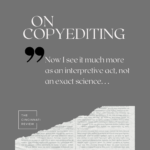Assistant Editor Jess Jelsma Masterton: When working in the micro form, writers often struggle to distill a single scene or experience into a 500-word-or-less narrative. How does one establish a beginning, middle, and end while also including the backstory or exposition necessary to pull an emotional punch? In his micro essay “The Flipping Years,” Kent Kosack captures a six-year period by eschewing episode or scene for the habitual. He deftly describes and defines those years as a writer can only in retrospect: as a period marked less by individual incidences than thematic patterns.
The Flipping Years
There were a few good years, from when I was twelve to eighteen maybe, the flipping years. We became a family of unintentional house-flippers. Through a blend of good timing, good luck, and a good eye, my father bought the right houses in the right towns. Houses that were to be homes but, as his debts ballooned and their values rose, that he was forced to sell. Again and again, buying one house, painting it, redecorating, renovating, going through the motions of settling in, and, a year or two later, selling to the highest bidder. And there were usually many, the houses going for double what he paid for them. The profits funneled back to the creditors to curb their craving for a bit, until the calls started again, the bullying collection agencies and, inevitably, the for-sale sign staked out in the yard we were just starting to know.
But those years were good, in a way. Purposeful. Formative. The movement, the way it felt less like a forced departure than a routine, part of the business of living, like a circus decamping, the troupe departing for another performance glittering on the horizon.
My father, shirtless, always shirtless—as if the confines of any shirt reminded him of his failures in the menswear business, the rise from cab driver to tie salesman to CEO, and the equally steep fall to real-estate agent, substitute teacher, liquidator and the landscape-supply salesman he now was—shirtless and falling off the second-floor deck, somersaulting into the flower bed below. He’d been staining the railing and must have leaned over a little too far. But he landed, like a cat, on all fours. Dusted himself off, held his finger to his lips to indicate that this was our secret, picked up his paintbrush, now coated in dirt, and went to finish the job.
That’s how I think of the flipping years. A series of deft falls and silent understandings. A time when, despite all the evidence to the contrary, we assumed, were convinced, that my father always got up again no matter from what height he fell. That this resilience was his real job.
There were woods behind this same house, new growth mostly, deciduous trees sloping down the hill of a county park to a creek at the bottom and the strip malls beyond it. Before we moved out and the new owners took over, my father ordered my brother and me to dump half-empty cans of paint in the woods. I think of them out there, toxic containers of liquid teal and brick red and creamy taupe, the colors of the newly painted exterior, long since painted over by subsequent owners. But the cans must still be in there with the trees, buried beneath leaves and dirt and scat, little wells of color, smoldering, preserved in coffins of rust.
Kent Kosack is a writer and MFA candidate at the University of Pittsburgh. He is working on a novel and a collection of short stories. His work has been published, or is forthcoming, in Sonora Review, Tin House (Flash Fidelity), Columbia Journal Online, 45th Parallel, 805 Lit + Art, and elsewhere. See more at his website.
For more miCRo pieces, CLICK HERE












